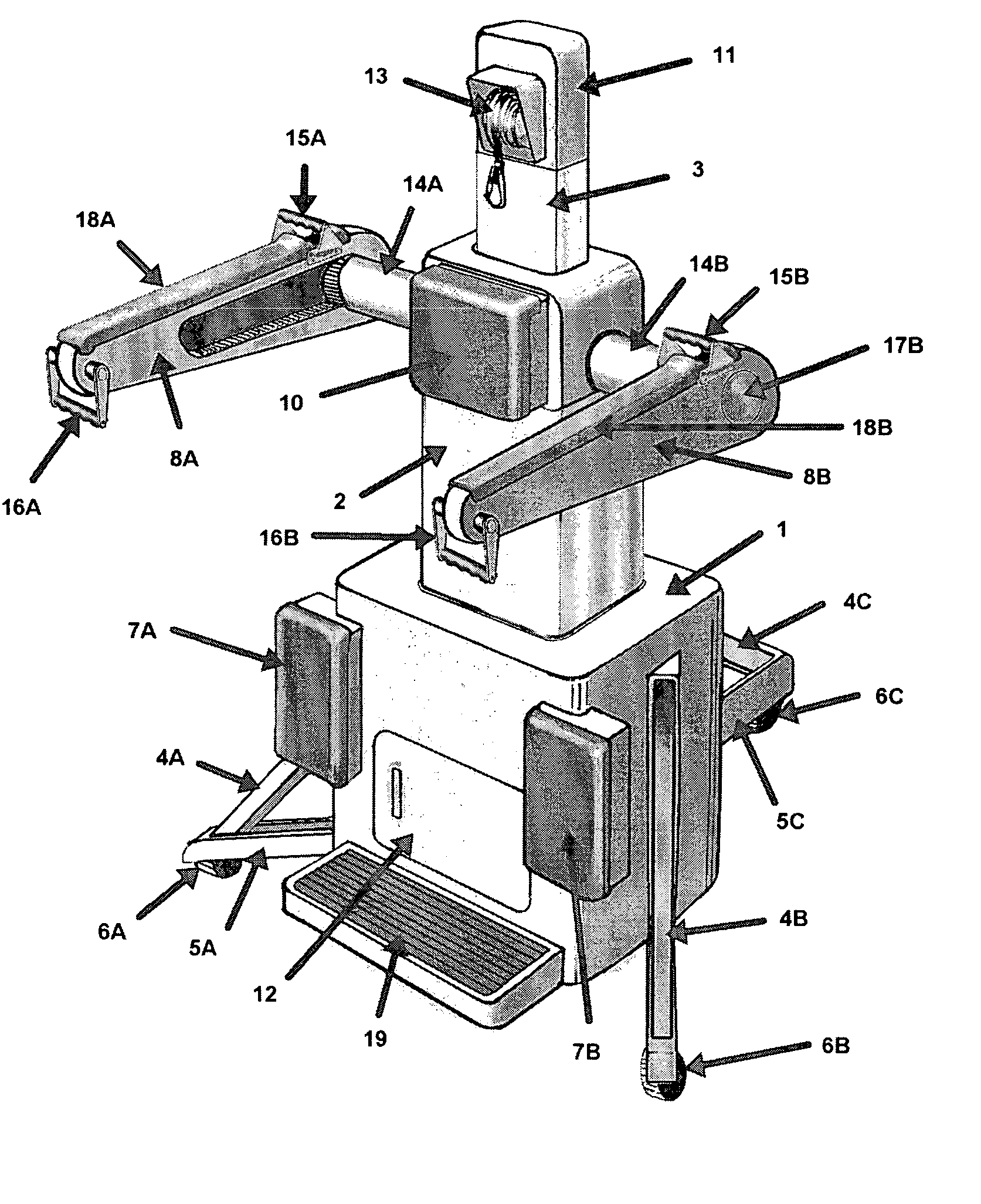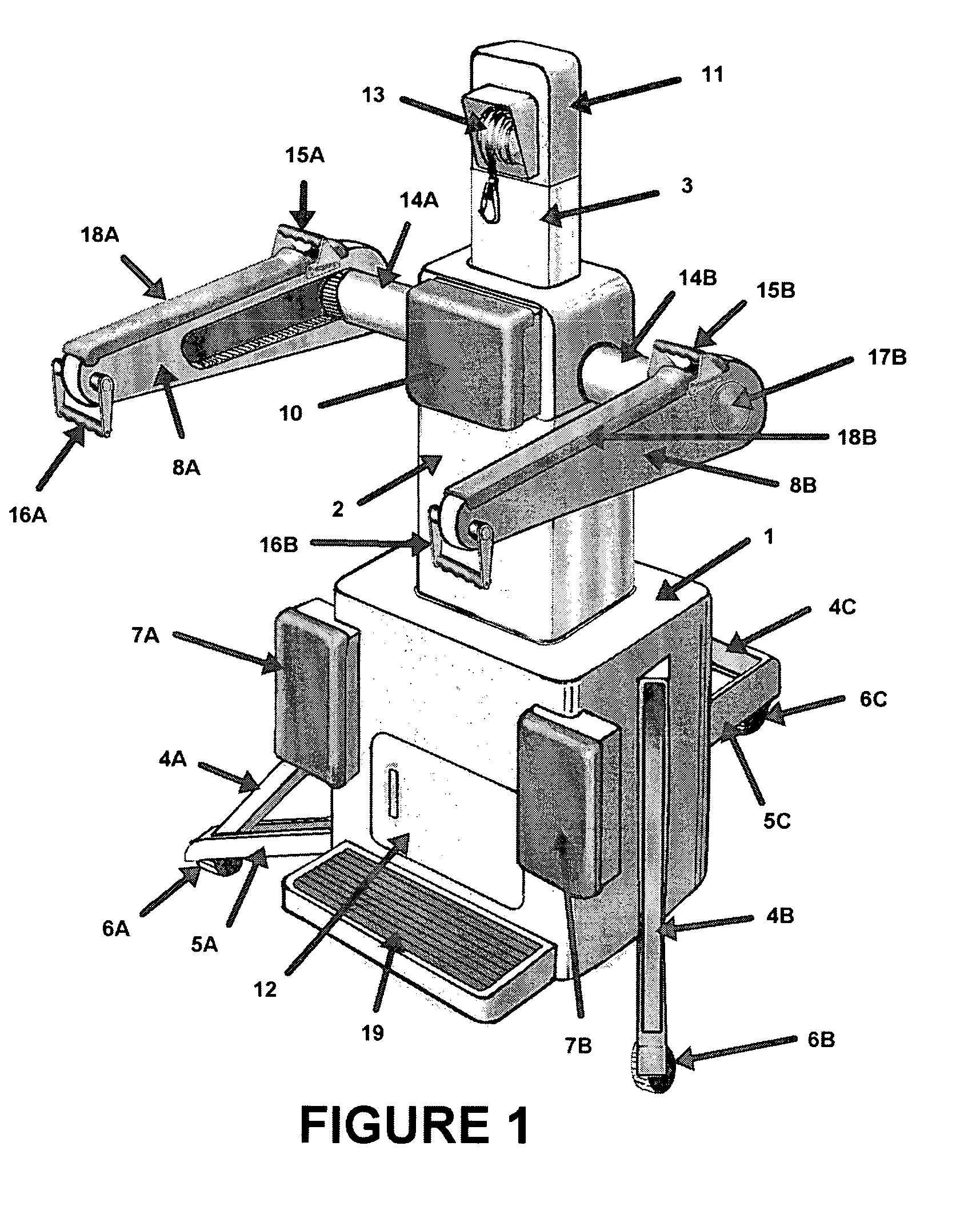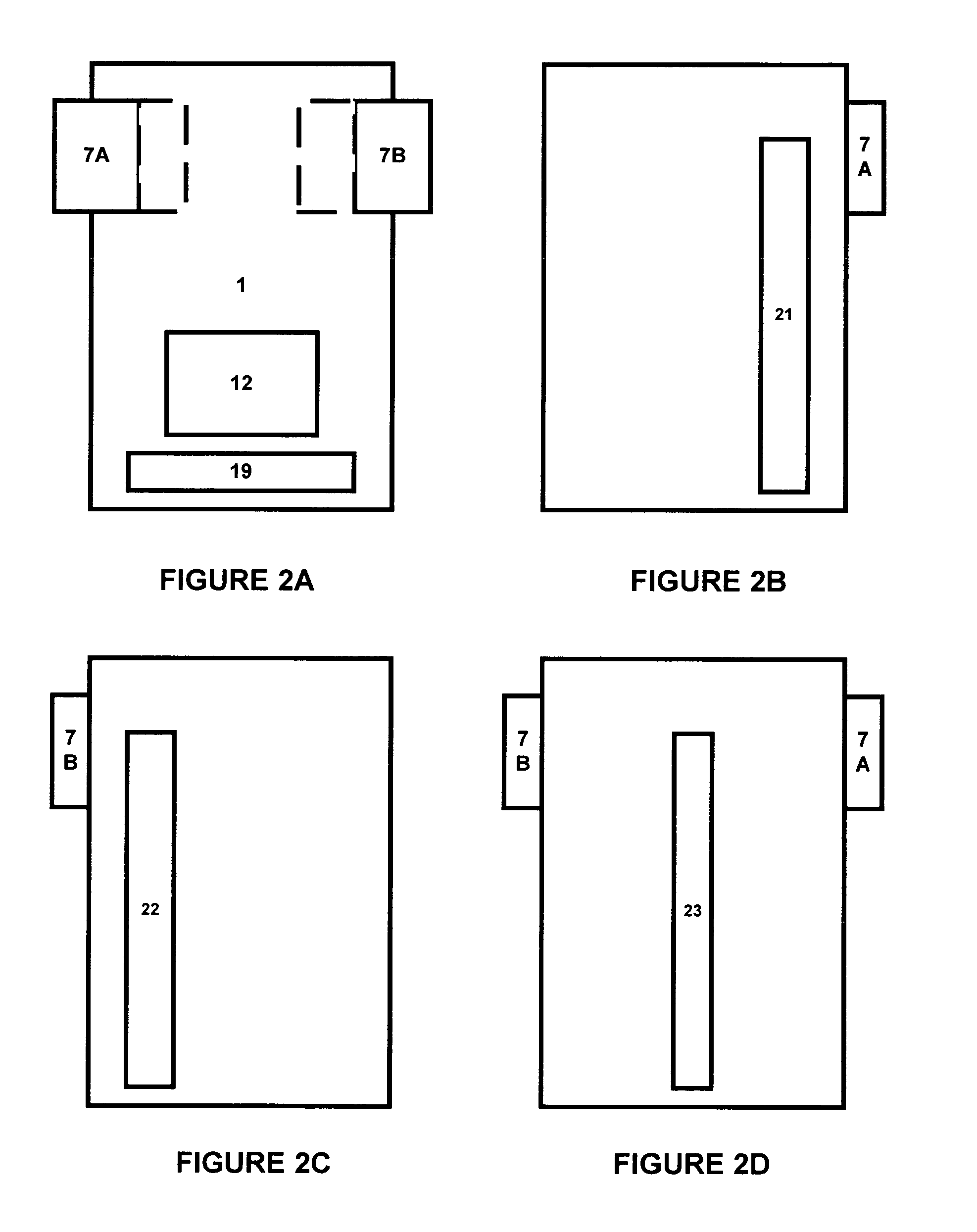Bariatric patient lift apparatus
a patient lift and portable technology, applied in the field of portable patient lifts, can solve the problems of affecting the overall effectiveness and safety of the patient lift system, affecting the patient's recovery, and introducing some distortion in the data acquired and its interpretation, so as to improve the stability of the apparatus, improve the overall effectiveness and safety, and reduce the effect of the apparatus stability
- Summary
- Abstract
- Description
- Claims
- Application Information
AI Technical Summary
Benefits of technology
Problems solved by technology
Method used
Image
Examples
Embodiment Construction
[0039]Referring now to the drawings, wherein identical numerals indicate identical parts, and initially to FIG. 1 which shows the profile view of the device in its maximum elevated position so the patient can rise from a seated position and then be located to another position.
[0040]The apparatus consists of a main trunk unit 1, a middle trunk unit 2 that is nested into the main trunk unit 1 along with the upper trunk unit 3 and which is nested into the middle trunk unit 2. Variable geometry stability fin units 4A, 5A, 4B, 5B {not shown}, 4C and 5C are attached to the main trunk unit 1. The weight, overall height of the patient that is to be lifted is programmed into the apparatus's microprocessor, which in turn determine the exact size of these stability fin units 4A, 5A, 4B, 5B {not shown}, 4C and 5C. The overall height of the invention is also controlled by the microprocessor. The patient's physical size and weight dictates what the lifting arm units 8A and 8B length will be and t...
PUM
 Login to View More
Login to View More Abstract
Description
Claims
Application Information
 Login to View More
Login to View More - R&D
- Intellectual Property
- Life Sciences
- Materials
- Tech Scout
- Unparalleled Data Quality
- Higher Quality Content
- 60% Fewer Hallucinations
Browse by: Latest US Patents, China's latest patents, Technical Efficacy Thesaurus, Application Domain, Technology Topic, Popular Technical Reports.
© 2025 PatSnap. All rights reserved.Legal|Privacy policy|Modern Slavery Act Transparency Statement|Sitemap|About US| Contact US: help@patsnap.com



